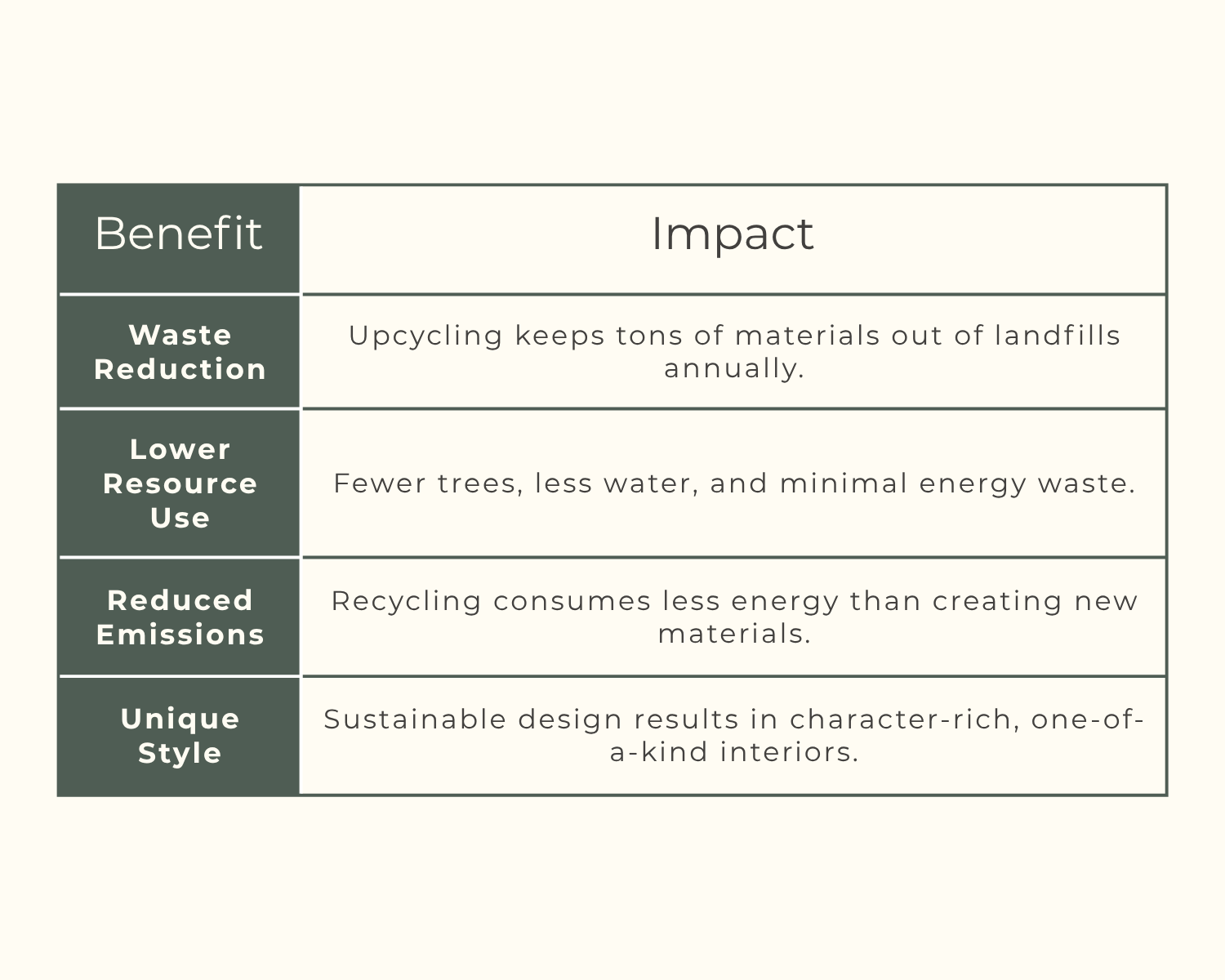Incorporating Sustainability in Design - Maison 1975
Sustainable interior design isn’t just a trend—it’s a necessary response to the growing demand for homes that are both beautiful and environmentally responsible. At Sentenac House Interiors, we believe sustainability should never mean sacrificing style. Our Maison 1975 project brings this philosophy to life, using upcycled and recycled elements to craft spaces that are not only timeless and functional but also kinder to the planet.
What Is Sustainable Design?
Sustainable design focuses on creating interiors that are efficient, healthy, and mindful of environmental impact. It means choosing materials, finishes, and systems that conserve resources, minimize waste, and support long-term well-being—without compromising on aesthetic appeal.
According to the U.S. Green Building Council, well-designed sustainable homes can reduce energy consumption by up to 30%. That’s not just good for the planet—it’s good for your wallet.
Core Pillars of Sustainable Design:
Energy Efficiency – Think insulation, passive solar design, and energy-saving appliances.
Water Conservation – Low-flow plumbing fixtures and native landscaping can significantly cut water use.
Eco-Friendly Materials – We prioritize renewable, recycled, and upcycled materials like bamboo, reclaimed wood, and repurposed glass.
Indoor Environmental Quality – Natural light, proper ventilation, and low-VOC finishes improve air quality and comfort.
Waste Reduction – Through thoughtful planning and upcycling, we reduce what goes to landfill and extend the lifecycle of materials.
Upcycling & Recycling
One of the most exciting aspects of a renovation is using creativity to lean into upcycling and recycling as central design strategies.
Upcycling: Creativity Meets Sustainability
Upcycling turns forgotten objects into functional and stylish elements. Repurposing vintage furniture and architectural salvage pieces gives you the ability to transform them into pieces that add both story and soul to the home.
Recycling: Resourceful by Design
Here are ways to incorporate recycling:
Glass countertops made from recycled bottles
Rugs are woven from plastic waste
Insulation sourced from repurposed denim
These elements help support a circular economy, reduce carbon emissions, and preserve natural resources like forests and freshwater.
Why Sustainable Design Matters:
Here’s why building greener interiors isn’t optional anymore:
Sustainability in Action: Maison 1975 Highlights
At Maison 1975, we carefully selected each element to support both form and function while prioritizing sustainability.
Natural Light
Large windows and an open layout flood the home with daylight, reducing reliance on artificial lighting and elevating the mood and energy of the space.
Conscious Materials
The kitchen and dining area feature what may be FSC-certified wood, ensuring ethical forestry. We used durable entry tiles to avoid frequent replacements, and reclaimed barn wood adds warmth and rustic texture.
Built to Endure
Rather than follow trends, we designed Maison 1975 to age gracefully. Its classic, grounded style, and material durability ensure minimal renovation waste over time.
Subtle but Smart
Imagine low-flow plumbing fixtures, energy-efficient appliances, and low-VOC paints in the bathrooms—simple swaps that make a major environmental impact.
Practical Ways to Bring Sustainability Into Your Home
Upcycling Tips
Turn a vintage dresser into a bathroom vanity.
Use old windows or doors as decorative wall art.
Repurpose wooden crates into bookshelves or side tables.
Recycled Ideas
Try rugs made from plastic bottles or ocean waste.
Choose insulation made from recycled paper or denim.
Use recycled glass for tiling and countertops.
Efficiency Tips
Install LED lighting and smart thermostats.
Choose ENERGY STAR-rated appliances.
Incorporate air-purifying plants like snake plants or peace lilies.
Water & Health
Switch to low-flow faucets and showerheads.
Use low-VOC paints and sealants.
Opt for drought-resistant landscaping.
The Bigger Picture
Sustainability doesn’t stop at our front doors. Projects like Maison 1975 align with global movements, including the UN Sustainable Development Goals on responsible consumption and climate action. Every design decision has the potential to create ripple effects beyond the home—across communities, industries, and generations.
A Note on Challenges
We’ll be the first to admit: that sustainable design isn’t always the easiest route. It can come with:
Higher upfront costs
Sourcing limitations
Extra planning for certification and product tracking
But we’ve found the long-term value and environmental payoff to be well worth the investment. Our advice: vet materials carefully, avoid greenwashing, and prioritize authenticity in your selections.
Final Thoughts
Maison 1975 proves that sustainable design isn’t just practical—it’s personal, powerful, and truly beautiful. At Sentenac House Interiors, we’re proud to blend environmental stewardship with timeless design. If this inspires you to create your own eco-conscious home, we invite you to explore the full project and share your thoughts with us.
Let’s design a future where beauty and responsibility go hand in hand.
Project Summary: Maison 1975’s Sustainable Strategies
Questions?
We’re an open book! Schedule a call or fill out the inquiry form below if you’re ready to start.
If you’re not ready, save this blog post for when you are!






